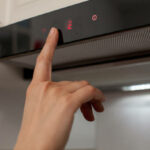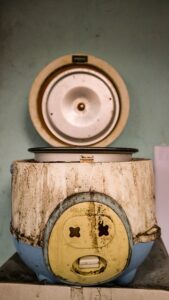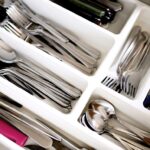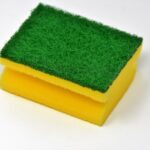Dirtiest Spots in Your Kitchen
go.ncsu.edu/readext?1003604
en Español / em Português
El inglés es el idioma de control de esta página. En la medida en que haya algún conflicto entre la traducción al inglés y la traducción, el inglés prevalece.
Al hacer clic en el enlace de traducción se activa un servicio de traducción gratuito para convertir la página al español. Al igual que con cualquier traducción por Internet, la conversión no es sensible al contexto y puede que no traduzca el texto en su significado original. NC State Extension no garantiza la exactitud del texto traducido. Por favor, tenga en cuenta que algunas aplicaciones y/o servicios pueden no funcionar como se espera cuando se traducen.
Português
Inglês é o idioma de controle desta página. Na medida que haja algum conflito entre o texto original em Inglês e a tradução, o Inglês prevalece.
Ao clicar no link de tradução, um serviço gratuito de tradução será ativado para converter a página para o Português. Como em qualquer tradução pela internet, a conversão não é sensivel ao contexto e pode não ocorrer a tradução para o significado orginal. O serviço de Extensão da Carolina do Norte (NC State Extension) não garante a exatidão do texto traduzido. Por favor, observe que algumas funções ou serviços podem não funcionar como esperado após a tradução.
English
English is the controlling language of this page. To the extent there is any conflict between the English text and the translation, English controls.
Clicking on the translation link activates a free translation service to convert the page to Spanish. As with any Internet translation, the conversion is not context-sensitive and may not translate the text to its original meaning. NC State Extension does not guarantee the accuracy of the translated text. Please note that some applications and/or services may not function as expected when translated.
Collapse ▲In general, most people do a pretty good job of keeping their kitchen clean. They clean and sanitize counter tops and clean the insides of the refrigerator, oven and microwave when needed. But there are a few spots in every kitchen that tend to be missed. When was the last time you cleaned these areas?
 Exhaust fan/vent hood. This area, directly over the stovetop, can collect all kinds of dirt and grease. The hood surface should be cleaned with hot soapy water at least once a week to remove any cooking oils and dust accumulation. The filters should be removed and washed with hot soapy water in the sink or in the dishwasher (if possible). Also think about washing down that back splash behind the stove.
Exhaust fan/vent hood. This area, directly over the stovetop, can collect all kinds of dirt and grease. The hood surface should be cleaned with hot soapy water at least once a week to remove any cooking oils and dust accumulation. The filters should be removed and washed with hot soapy water in the sink or in the dishwasher (if possible). Also think about washing down that back splash behind the stove.
Garbage disposal. Yes, we run hot water down the disposal all the time and it probably gets some soap suds too – but that’s not enough. Start by running the disposal for a moment to make sure there’s no food left in it. Then, with the disposal and water both turned off, pour ½ cup baking soda and 1 cup vinegar into the disposal. Allow it to foam for a minute or two. Turn the disposal on and run hot water through it for another minute. The slight abrasiveness of the baking soda will help scrub away built-up food residue. Finish by grinding up some citrus peels to leave behind a fresh scent.
 Under appliances. Dust, hair and other random bits (perhaps cat toys or stray grapes) that end up under the refrigerator and stove. Use a vacuum cleaner attachment or a yardstick to clear out this area. The front grill and condenser coils on a refrigerator should be kept free of dust accumulation for energy efficiency. If possible, pull the appliance away from the wall and clean behind. Do the same with your microwave and other small appliances.
Under appliances. Dust, hair and other random bits (perhaps cat toys or stray grapes) that end up under the refrigerator and stove. Use a vacuum cleaner attachment or a yardstick to clear out this area. The front grill and condenser coils on a refrigerator should be kept free of dust accumulation for energy efficiency. If possible, pull the appliance away from the wall and clean behind. Do the same with your microwave and other small appliances.
The garbage can. Even though we line it with a bag that is supposed to contain the garbage, the bag doesn’t always stay in place. If you have a garbage bag slip or leak, clean the garbage can with hot soapy water (inside and outside) and allow it to air dry before putting in another garbage bag. Cleaning outside garbage cans regularly is also a good idea.
 Utensil crocks and flatware trays. It is amazing how much dust and crumbs can
Utensil crocks and flatware trays. It is amazing how much dust and crumbs can
accumulate at the bottom of these items – considering that only clean utensils are ever put in them. Before putting away your flatware and cooking utensils next time, empty out your trays or crocks and clean inside them first.
 Kitchen Sponges. These versatile cleaners tend to harbor moisture and collect bacteria and viruses. There is more than one way to clean a sponge. Rinsing in soapy dishwater or soaking it in bleach or lemon juice may not be the best ways. Research by the USDA shows that using the microwave or dishwasher are the most effective methods for inactivating pathogens on sponges.
Kitchen Sponges. These versatile cleaners tend to harbor moisture and collect bacteria and viruses. There is more than one way to clean a sponge. Rinsing in soapy dishwater or soaking it in bleach or lemon juice may not be the best ways. Research by the USDA shows that using the microwave or dishwasher are the most effective methods for inactivating pathogens on sponges.
Running the sponge through a cycle in your dishwasher can kill 99% of pathogens
including yeasts and molds. The key is to have a drying cycle.
Microwaving the sponge is also 99% effective. To assure this pathogen reduction,
microwave a wet sponge on high power for two minutes. A couple of tips: make sure the sponge does not contain metal and that it is wet enough to prevent a fire. Be careful, it’ll be hot when you take it out of the microwave. Even when using these methods, you still might want to replace sponges frequently.
Source: Kate Shumaker, MS RD, LD, Family and Consumer Sciences Educator, Ohio State University Extension, Holmes County; University of Florida IFAS Extension and University of Minnesota Cooperative Extension and USDA Ag Research Service.
Syracuse is a Family and Consumer Science team member and can be reached at N.C. Cooperative Extension, Brunswick County Center 910-253-2610 or by email at
clsyracu@ncsu.edu



